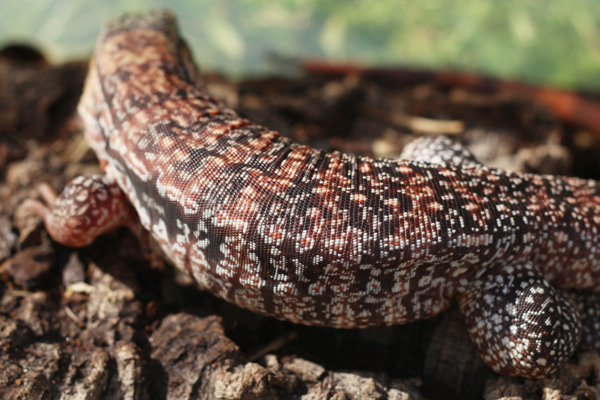There are lots of reasons to love living in Florida, with
the weather being one of the top ones for me. It’s early December and it’s a
lovely 76 degrees F right now! I have the windows wide open and a chameleon
basking outside in the sun. However, it has one very frustrating problem for
those of us who keep reptiles – we have such a hard time finding feeder
roaches!
It’s terrible, those of us who want to purchase and use
feeder roaches end up spending an exaggerated amount of time looking around for
legal roaches to purchase, end up paying more money for them, and sometimes
can’t find any for purchase at all! For example, the standard roach for most
reptile keepers is the dubia but they are illegal to own here in Florida. So
while people in other states can find them for sale at perhaps $50 for 1000 or
more, we are stuck paying $10 or more for 25 measly discoid nymphs (the legal
sister species of the dubia). And that’s if we can find discoids for sale at
all! Since they are less popular, they’re often sold out on feeder websites and
we can’t purchase any. The only alternative is to get dubias illegally from
others that have them, but I don’t personally want to risk getting into legal
trouble over some roaches!
 |
| Charlotte the Meller's enjoys a discoid roach nymph for breakfast. |
Here are
a few reasons to look into starting a small (or large!) colony:
1. Much meatier than crickets.
2. Live significantly longer than crickets (about a
year or so.)
3. Breed prolifically and easily (an adult female
could give birth to about 20 nymphs a month.
4. Very easy to care for. Just need a plastic tub, some egg flats, food, water, and heat.
5. Do not climb smooth surfaces, fly, or jump.
6. Do not make noise (just the pitter-patter of
roach feet on egg flats.)
7. Do not smell if bin is kept clean and dry, not
like crickets which always seem to smell.
8. Gut load extremely well and are voracious
eaters.
Not all pet reptiles will eat roaches readily, and some will never accept them as part of their diet. They are not as active or fast as crickets and sometimes don’t interest some reptiles. But I think trying is well worth it.
I understand that keeping roaches is a hurdle to get over
for some people (I understand, I have a roach phobia and get goosebumps just
writing about them) but they are well worth the investment.
Not all pet reptiles will eat roaches readily, and some will never accept them as part of their diet. They are not as active or fast as crickets and sometimes don’t interest some reptiles. But I think trying is well worth it.
A year ago, when I was living in a different home with as
many as 5 species of Florida legal roaches, all of which were thriving, I was
completely self-sufficient when it came to chameleon food. I had roaches and
superworms breeding readily at home, and would supplement my feeders with pods
of worms or small batches of crickets every so often, but it was a delight (and
much more affordable) to not have to purchase 2-3 thousand crickets every
month. I was saving around $100 a month on crickets and shipping.
So I highly recommend that everyone who might be interested
in a better feeder, getting tired of crickets, or just wants to be more
self-sufficient by breeding their own feeders should look long and hard into keeping
roaches.
Some very easy species to keep that don’t climb or fly are:
- Dubias
- Discoids
- Dusky cave roaches
- Giant cave roaches
- Orange head roaches
Others that do climb but might be worth looking into if you’re
brave*:
- Madagascar hissing roaches
- Green banana roaches
- Surinam roaches
- Turkistan roaches
*These do climb and might be difficult to contain in normal
tubs. Care must be taken to use Vaseline or something similar around the top
edge to keep them in.
So as I sit here trying to find someone to sell me
Florida-legal roaches to supplement my own colonies, look into colonies of your
own. You may find a healthy new food source for your pets and save a lot of
money down the line because of it.












It took me great effort to secure a batch of dubia and months of waiting to establish a colony. Unfortunately my 2 panther chams refuse to eat them. My veil will occasionally eat only if I hand feed. Now I have a thriving colony of dubia but only my bearded dragon eats them consistently.
ReplyDeleteOh no! Have you tried tong/hand feeding them? Sometimes since they don't move very much a chameleon won't notice them. But in tweezers or something where you can squeeze them and make their legs flail usually gets their attention. If not, you can always start selling some locally if you have too many!
DeleteMy veil only eats if I face the bottom of the dubia directly so their legs can be seen wriggling.
DeleteI am being optimistic that when my panthers matures, they can adapt to dubias. Maybe they are still shy now.
This comment has been removed by a blog administrator.
ReplyDeleteThis comment has been removed by a blog administrator.
ReplyDeleteThis comment has been removed by a blog administrator.
ReplyDeleteDo you cup feed the roaches or do you day and free-range them? I find it best for my 6 month old Sambava Panther to put my discoids on his leaves and branches and let them crawl around those... he tends to hunt them and eat them once they move a little. He almost refuses to cup feed with them (because they don't move).
ReplyDeleteเปลี่ยนสล็อตxo ที่แสนน่าเบื่อเป็นเกมสล็อตออนไลน์ slotxo แสนสนุกที่นี่เท่านั้น
ReplyDeletehttps://www.slot4u.com/slotxo